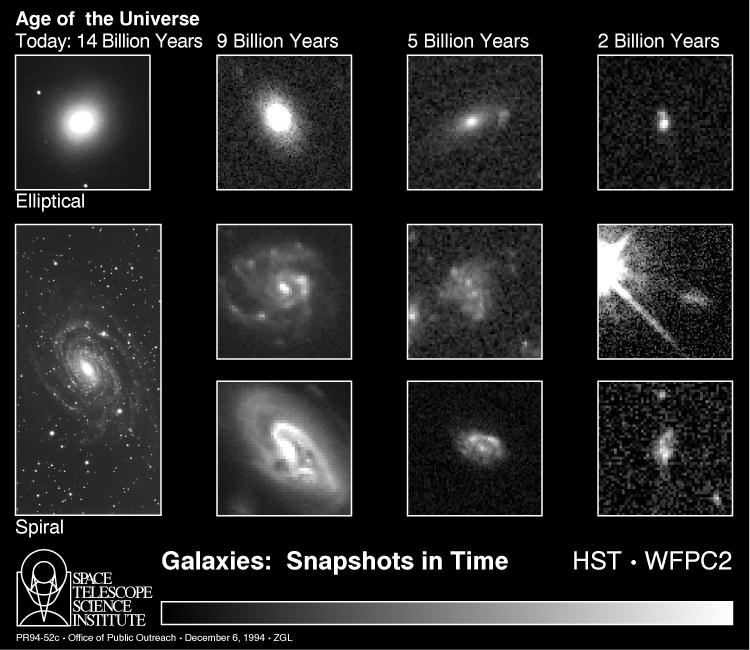Perfect Cosmological Principle (PCP)We occupy neither a preferred place in the Universe nor exist at a preferred time. Not only does the Universe appear homogeneous and isotropic to all observers at all times in the Universe, the properties of the Universe are the same at all times.The PCP is dismissed by observing that galaxies evolve (see figure to right) and by the expansion of the Universe if one doesn't invoke rather hard-to-take processes. Philosophically speaking, the PCP is very attractive as it removes the necessity for a birth and/or death of the Universe -- the Universe is and has always been. The PCP gave rise to the steady-state model for the Universe in the 1940s. |
 |
